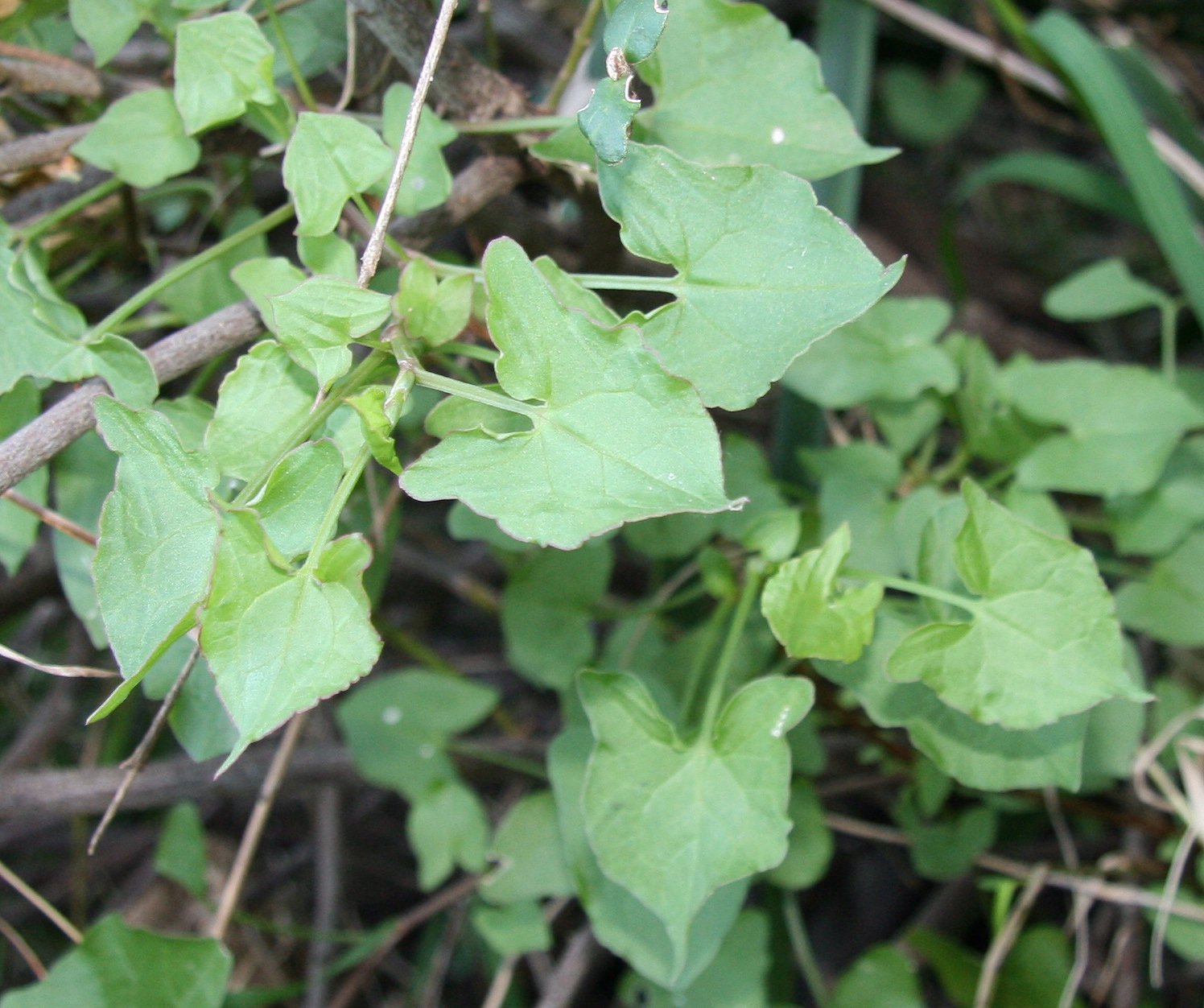- Acetosa sagittata
Taxobox
name = "Acetosa sagittata"

image_width = 220px
image_caption = Characteristic arrow-shaped leaves
regnum =Plant ae
divisio = Magnoliophyta
classis = Magnoliopsida
ordo =Caryophyllales
familia =Polygonaceae
genus = "Acetosa"
species = "A. sagittata"
binomial = "Acetosa sagittata"
binomial_authority = (Thunb.) L. A. S. Johnson & B. G. Briggs
synonyms = "Rumex sagittatus" Thunb."Acetosa sagittata", commonly known as turkey rhubarb or rambling dock, is a herbaceous perennial plant native to southern Africa, which has become a weed in Australia and New Zealand.
Taxonomy
Initially described as "Rumex sagittatus" by Swedish botanist
Carl Peter Thunberg , it was later placed in the genus "Acetosa" by Australian botanists Lawrie Johnson andBarbara Briggs . Its specific name is derived from theLatin "sagitta" "arrow", hence "arrow-shaped". [cite book|author = Simpson DP| title = Cassell's Latin Dictionary | publisher = Cassell Ltd.| date = 1979|edition = 5|location = London|pages = 883| isbn=0-304-52257-0] The plant is known by various common names including turkey rhubarb, arrowhead vine, potato vine, rambling dock or climbing sorrel.Description
"Acetosa sagittata" is a soft-stemmed herbaceous scrambling and climbing plant with prominent triangular arrow-shaped leaves 3-6 cm (1.4-2.4 in) in length and 2-4 cm (0.8-1.6 in) wide. The grooved green stem may be distinctly tinted red at times. The small pinkish flowers grow on panicles up to 15 cm (6 in) long. These are followed by a 3-sided greenish 0.8-1 cm diameter pod. The plant grows from a tuber, which may be up to 10 cm (4 in) long. The plant flowers and sets seed over summer, and may die back to the tuber in colder areas.cite book |title=Winning the war of Weeds: The Essential Gardener's Guide to Weed Identification and Control |last=Wolff |first=Mark A. |year=1999 |publisher=Kangaroo Press |location=Kenthurst, NSW |isbn=0-86417-993-6|pages=p. 49]
Distribution and habitat
The plant is native to southern Africa, where it occurs from
Malawi andZambia south toSouth Africa . It has become naturalised in many parts of Australia near urban areas, fromQueensland to easternTasmania , and warmer locales in New Zealand. [ [http://www.arc.govt.nz/albany/index.cfm?63E0F20E-14C2-3D2D-B905-50098EBBE4B9&plantcode=Rumsag] ]It spreads by seed or by resprouting from the tuber. The seeds float on water and hence may be conveyed far from the parent plant. Tubers may be broken up by tractors or road graders and each fragment may be able to regrow; they can also be difficult to find with removal of plants by hand. "Acetosa sagittata" may grow and smother other plants it covers. [ [http://www.sydneyweeds.org.au/weeds/turkey-rhubarb.php] ]
References
Wikimedia Foundation. 2010.
